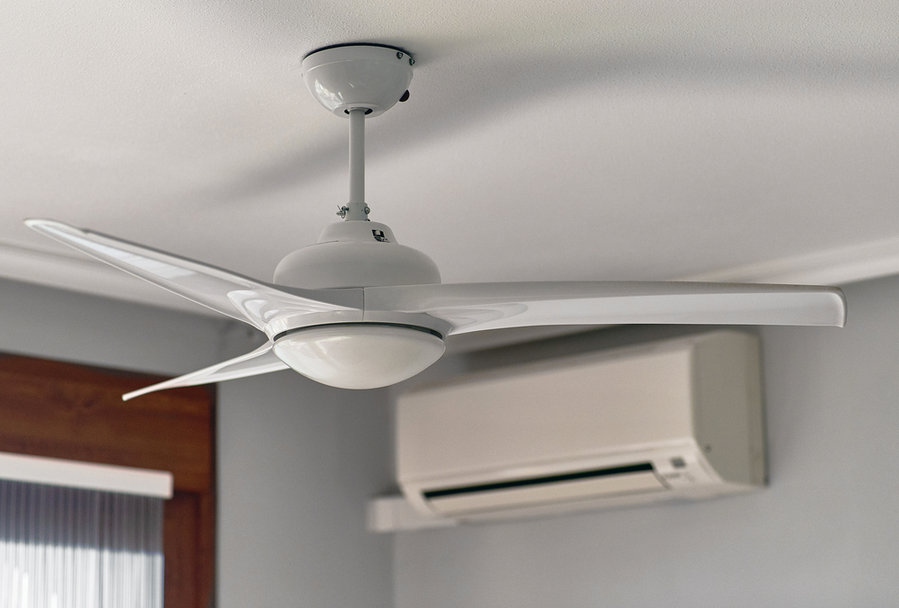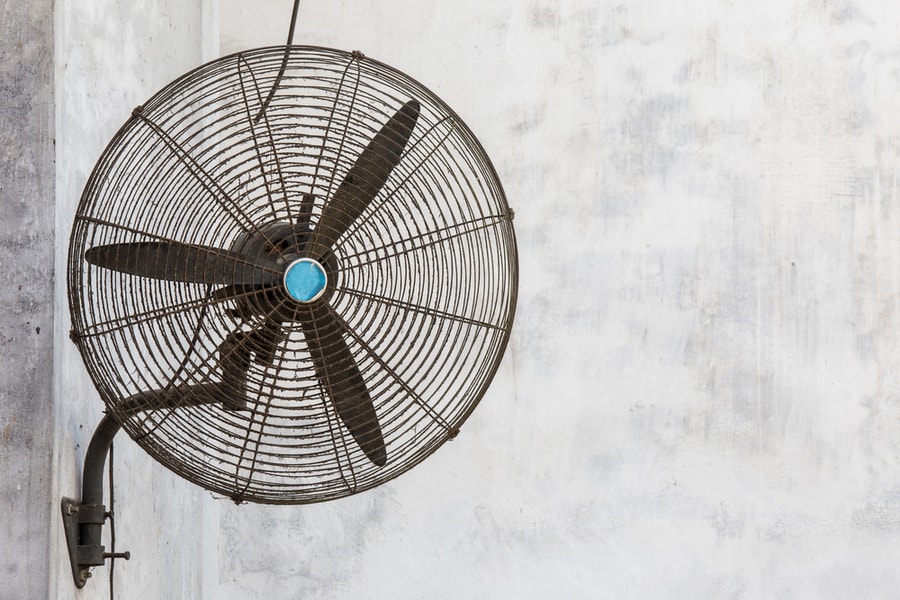
Ceiling fans are worthwhile investments because, besides beautifying a room, the circulating air it provides from above delivers cooling comfort.
If you’re in the market for a fan, a dual-mount model might be what you’re looking for. A dual-mount ceiling fan fits in most rooms, so it doesn’t matter whether you have a high, low, or standard ceiling height.
But how exactly does the dual-mount ceiling fan achieve this versatility? Find out with this quick guide.
- Dual-mount ceiling fans allow owners to use a down rod or not in adjusting the distance or depth of the fan from the ceiling.
- The dual-mount ceiling fan is ideal when you have yet to set a specific location or place to install it.
- You can easily take down a dual-mount fan and refit to multiple locations if you need to move it elsewhere.
Buying a ceiling fan is more complex than it seems because there are details like installation options you can’t leave out. You also have to consider whether it would be easy to uninstall and move it elsewhere.
What Is a Dual Mount Ceiling Fan?
A dual-mount ceiling fan is the one you pick when ceiling height is not an issue. You can use the rod that comes with it or not, depending on how high or low you want the fan to hang.
Different Types of Ceiling Fan Mounts
For maximum cooling efficiency, a buyer needs to know the different fan mount types to ensure they align with the room conditions, size, and ceiling height.
1. Single Mount

A single-mount fan is for standard 8-foot to 9-foot ceilings, and it comes with a 3 to 5-inch down rod that connects the fan to the motor housing. Since the fan is not easily removable, this mount type is best for permanent installations.
2. Dual Mount

Because of mount versatility, a dual-mount fan won’t cause so much of an installation issue. You can install the fan close to the ceiling or use the down rod if you prefer it to hang further from the ceiling, and this mounting type is for low, standard, and high ceilings.
3. Triple Mount

Triple-mount fans (tri-mount fans) are also suitable for close ceiling installation or installation with a down rod like a dual-mount fan.
However, this mounting type is unique for a third feature or angle mount option that allows installation specifically for a sloped ceiling.
Ceiling fans are investments and must-own amenities for many homeowners. But before you shop for one, it would help to have the essential measurements like the room area and ceiling height.
Show them to the store attendant to save time and receive the proper recommendation.
When Should You Buy a Dual Mount Ceiling Fan
If you want a ceiling fan but don’t have a specific location or room to install it, buy the dual mount without Mounteliberation. Remember you have two options to install it, close to or far down from the ceiling.
Thus, you can install it anywhere in your apartment, condo, or house or move it to another location.
When Not To Choose a Dual Mount Ceiling Fan
You can save on costs and not choose a dual-mount ceiling fan if you want a simple flush mount without a drop rod on a standard ceiling. You don’t need one if the installation is permanent in one location only.
You should also opt for a triple-mount fan if you’re hanging your fan from a sloped ceiling.
Takeaway
A dual-mount ceiling fan is versatile in its design and salient features. You can mount it close to the ceiling or use a down rod to lower the fan to your desired length.
More importantly, there’s no restriction, as you can install it conveniently in multiple locations.
Consider getting a dual-mount ceiling fan next time you’re on the market for a fan and enjoy greater versatility with its flexible mounting options.
Frequently Asked Questions
Do Flush-Mount Ceiling Fans Move Less Air?
Nailing the distance is vital to getting the best airflow from your ceiling fan. A ceiling fan that is flush mounted or close to the ceiling moves less air because airflow is more restricted when fan blades are closer to the ceiling.
The recommended distance of the ceiling fan to the floor is at least six feet, while the ideal distance between the fan blades and the ceiling is eight inches.
Which Type of Fan Gives More Air?
Depending on your taste or preferred aesthetic, you can choose between a 3-blade and 5-blade fan. However, you can achieve a perfect balance between noise and the amount of air circulation with a 5-bladed ceiling fan.
On the other hand, three blades offer a smaller fan profile with enough airflow.












